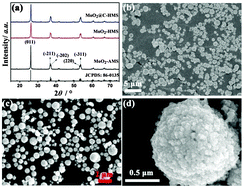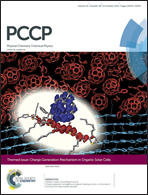MoO2@carbon hollow microspheres with tunable interiors and improved lithium-ion battery anode properties†
Abstract
MoO2 hollow microspheres with tunable inner space have been synthesized through a hydrothermal process using MoO3 microbelts instead of bulk MoO3 as the precursor. It is found that the reactant morphology has a great impact on the product morphology and the inner space can be tuned by changing the amount of NaOH aqueous solution. An interesting evolutional process from MoO3 microbelts through a rose-like intermediate to MoO2 hollow microspheres has been clearly observed, and thus the possible formation mechanism is revealed. One layer of amorphous carbon has been subsequently coated on the surface of MoO2 hollow microspheres through a simple hydrothermal approach followed by annealing in argon. As the anode material for lithium ion batteries, MoO2@C hollow microspheres manifest excellent lithium-storage properties, such as high capacity (677 mA h g−1) and good cycling stability (negligible capacity fading even after 80 cycles). The significantly enhanced performance of MoO2@C hollow microspheres can be attributed to its unique structures, such as nanoscaled primary building blocks, carbon coating, hollow structure, and especially the synergy between the carbon coating and hollow structure.


 Please wait while we load your content...
Please wait while we load your content...